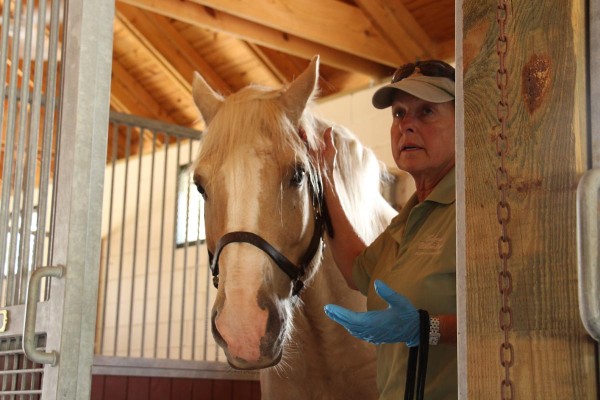 Meet Lucky, one of the newest additions to the Colonial Williamsburg family. We think Lucky is well—lucky! Not only does he have one of the best trainers around, his new gig will soon take him from the stables out into the Historic Area where he may just get to meet some of you.
Meet Lucky, one of the newest additions to the Colonial Williamsburg family. We think Lucky is well—lucky! Not only does he have one of the best trainers around, his new gig will soon take him from the stables out into the Historic Area where he may just get to meet some of you.
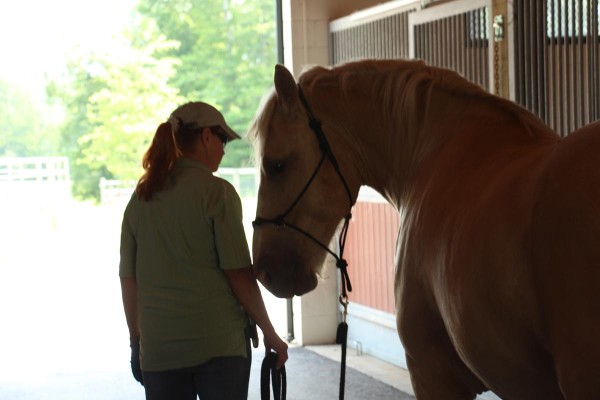 Joyce Henry is head coachman and interpreter in our Coach & Livestock Department. Her technique for training horses can be summed up in two words: gentle and patient. Joyce uses body language rather than English, and “breaking” the horse is not a part of her vocabulary. Instead, her goal is to build a relationship with the animal by gaining its trust and establishing who’s boss early on. (Hint: it’s not the horse!).
Joyce Henry is head coachman and interpreter in our Coach & Livestock Department. Her technique for training horses can be summed up in two words: gentle and patient. Joyce uses body language rather than English, and “breaking” the horse is not a part of her vocabulary. Instead, her goal is to build a relationship with the animal by gaining its trust and establishing who’s boss early on. (Hint: it’s not the horse!).
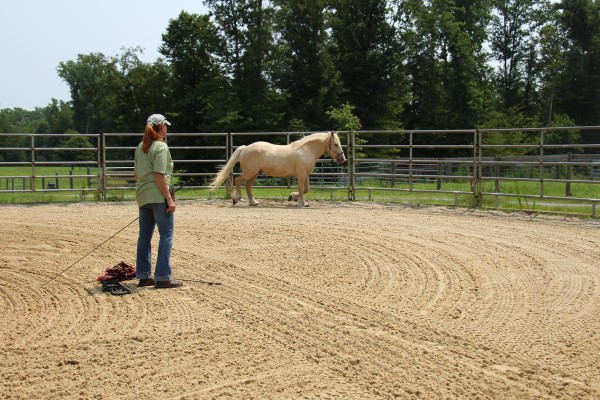 I was recently invited to see Joyce in action—at the small ring she’s using to train three of our horses, including Lucky. Inside the pen, Lucky trotted around the edges while closely watching Joyce’s movements in the center. Joyce tells me body language is everything in this kind of training. A move as simple as turning to face the horse can be viewed as an aggressive stance and one that communicates superiority.
I was recently invited to see Joyce in action—at the small ring she’s using to train three of our horses, including Lucky. Inside the pen, Lucky trotted around the edges while closely watching Joyce’s movements in the center. Joyce tells me body language is everything in this kind of training. A move as simple as turning to face the horse can be viewed as an aggressive stance and one that communicates superiority.
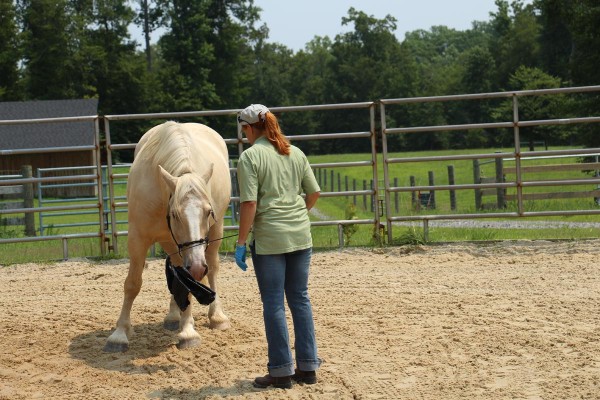 With a focused shift of her body, she communicated to him when to move, when to turn, and when to stop. It took awhile, but gradually Lucky started to view Joyce as the “herd leader.” It wasn’t long before Joyce was moving Lucky back and forth in perfectly controlled motion. And while horses can’t understand words, they can understand tone of voice. Joyce kept hers steady and neutral the entire time. We heard her frequently praise Lucky with a gentle, “Good boy!”
With a focused shift of her body, she communicated to him when to move, when to turn, and when to stop. It took awhile, but gradually Lucky started to view Joyce as the “herd leader.” It wasn’t long before Joyce was moving Lucky back and forth in perfectly controlled motion. And while horses can’t understand words, they can understand tone of voice. Joyce kept hers steady and neutral the entire time. We heard her frequently praise Lucky with a gentle, “Good boy!”
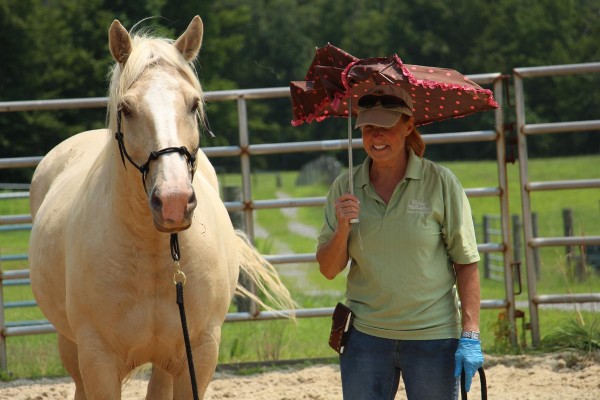 As Joyce slowly started to gain Lucky’s trust, she also began to introduce distractions—objects and sounds he will likely encounter in the Historic Area. For example, she rustled a piece of a plastic garbage bag next to him and even popped open an umbrella. (I think we need to buy her a new one!). She told us it’s okay if he initially reacts, but the goal of her training is to control how he acts moving forward.
As Joyce slowly started to gain Lucky’s trust, she also began to introduce distractions—objects and sounds he will likely encounter in the Historic Area. For example, she rustled a piece of a plastic garbage bag next to him and even popped open an umbrella. (I think we need to buy her a new one!). She told us it’s okay if he initially reacts, but the goal of her training is to control how he acts moving forward.
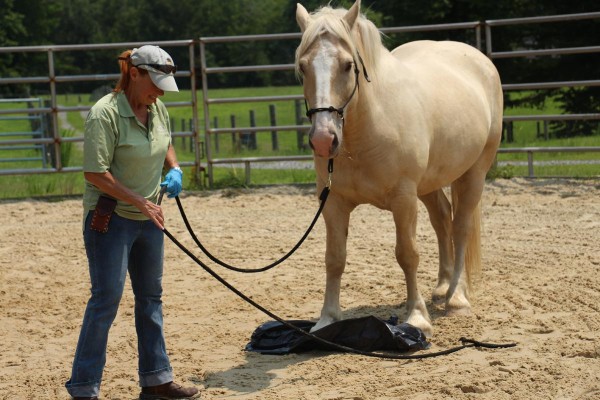 We saw first-hand just what she meant when Lucky eventually walked over the same plastic bag he had feared and avoided just 2 minutes earlier. It was fascinating! The hope is that as Lucky (and any horse in training) learns to trust Joyce, he will becomes less fearful of these everyday items and noises. Eventually, he should learn to follow, and not lead, in the relationship with his new handler and rider. A gentle tug on the rope, met with little to no resistance, should be all it takes to guide him.
We saw first-hand just what she meant when Lucky eventually walked over the same plastic bag he had feared and avoided just 2 minutes earlier. It was fascinating! The hope is that as Lucky (and any horse in training) learns to trust Joyce, he will becomes less fearful of these everyday items and noises. Eventually, he should learn to follow, and not lead, in the relationship with his new handler and rider. A gentle tug on the rope, met with little to no resistance, should be all it takes to guide him.
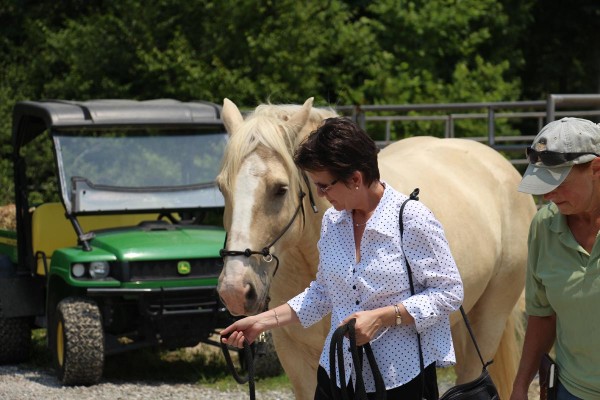 Joyce made the training look so easy that at the end of the session, I accepted the offer to put her advise into practice. As it turned out, I was the one who needed training! Joyce had to keep telling me, “Don’t look at him!” as I led Lucky from the ring into the barn.
Joyce made the training look so easy that at the end of the session, I accepted the offer to put her advise into practice. As it turned out, I was the one who needed training! Joyce had to keep telling me, “Don’t look at him!” as I led Lucky from the ring into the barn.
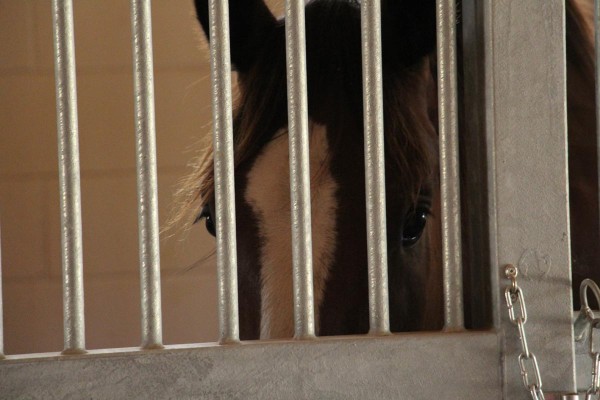 So how do horses end up in the Revolutionary City to begin with? Some, like Lucky, are donated to us. But many others begin their journey way up in Canada. That’s where we have an arrangement with a dealer who keeps an eye out for horses he thinks will be a good fit for Colonial Williamsburg. Although some (like Lucky) can be as old as eight when they arrive to train with Joyce, we tend to prefer them younger—at two to four years of age. The dealer is also looking for horses that will easily adapt to our working environment as well as our hot, humid climate. Once he thinks he has a good candidate, he sends a video to our staff for review. Below is a sample of one of those videos shot at a farm in Canada. As you can see, the horses will need a lot of training before they’re ready for the Historic Area!
So how do horses end up in the Revolutionary City to begin with? Some, like Lucky, are donated to us. But many others begin their journey way up in Canada. That’s where we have an arrangement with a dealer who keeps an eye out for horses he thinks will be a good fit for Colonial Williamsburg. Although some (like Lucky) can be as old as eight when they arrive to train with Joyce, we tend to prefer them younger—at two to four years of age. The dealer is also looking for horses that will easily adapt to our working environment as well as our hot, humid climate. Once he thinks he has a good candidate, he sends a video to our staff for review. Below is a sample of one of those videos shot at a farm in Canada. As you can see, the horses will need a lot of training before they’re ready for the Historic Area!
If the candidate makes it past that initial test, a vet in Canada then checks out the horse to make sure it’s healthy and fit for the 14-hour trip from there to Virginia.
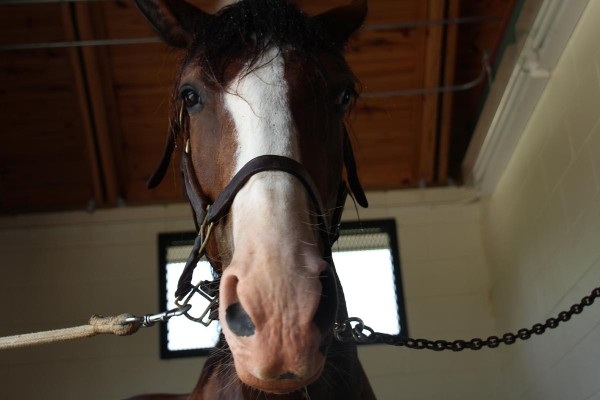 Every horse that arrives here in the colonial capital is treated as an individual, each with its own unique personality. “All of our horses are good. They wouldn’t be here if they weren’t,” says Karen Smith Watson, supervisor of stable operations.
Every horse that arrives here in the colonial capital is treated as an individual, each with its own unique personality. “All of our horses are good. They wouldn’t be here if they weren’t,” says Karen Smith Watson, supervisor of stable operations.
Then comes the more intensive training with Joyce to learn to tolerate large groups of tourists and loud distractions. It’s also imperative that each horse can handle the many small hands of children that will reach up to pet him at every stop. All that tolerance and attention is hard work! Just like people, Karen said horses also need a “mental health day” every once in a while. Sometimes, even our veteran horses get tired of being in the spotlight and putting their best foot forward. That’s when they get some serious R & R in one of our pastures—far away from the pressing crowds.
While Karen told me it’s by no means a hard life for our horses, it is a mundane one. Their daily routines will rarely change and they will truly become creatures of habit. Most will put in a good 10 to 15 years of service before enjoying retirement.
The training and new home might seem a little overwhelming for these horses at times, but I was so impressed with the care and knowledge that goes into helping these animals adjust to Colonial Williamsburg’s way of life. Eventually, Lucky and the other new horse teams will team up with riders and drivers and venture onto DoG Street during the slower periods, which means fewer guests and less traffic. As they grow accustomed to the day-to-day routine, the goal is for them to one day become part of the Colonial Williamsburg experience, and you—the guests—will get to know them by name!

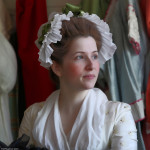
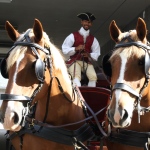
Thank you for another great post. Where else may anyone get that kind of info in such a perfect method of writing?
I’ve a presentation next week, and I’m at the look for such info.
Thank you King, for your kind comments. While hardly perfect, we do enjoy writing about our favorite subject, Colonial Williamsburg!
Excellent post on these beautiful animals and the training they receive. I am so glad they are trained with gentle voices, patience and body language. Lucky is in fact “1 lucky horse” to be joining the CW family and we “visitors” are lucky to have such beautiful and well-trained horses to visit.
Thank you for your comments Jan. We agree that gentle is the only way to go.
I work with oxen at a demonstration farm in Costa Mesa California. Our oxen are trained in a similar manner. We have two American Lineback oxen that were trained by a teenager as a 4-H project in New Hampshire. We purchased our team when they were 3 years young, not fully grown. By the time they matured each animal stands 6 feet at the withers and weighs 3,000 pounds. They are huge, powerful, and gentle. Each weekday during the school year they welcome 400 kindergarten children visiting our farm on a field trip. Our oxen are gentle around the children and well behaved. I train our oxen to learn that I am worthy of their trust and respect. I have developed a relationship of mutual trust and respect with these oxen. We understand each other very well. During the 12 years I have worked with oxen the change in who I am is obviously, I have become a better human being with their guidance.
What a wonderful and touching story Philip. We love our oxen too! There is truly something awesome about working with animals that helps us all be better human beings.
Very interesting information about the acquisition and training of the well cared for horses in Colonial Williamsburg.
Thanks Brenda. Hopefully you can come see them and the other animals here soon.
Super!
Thanks Terrence!
Fascinating story and photographs! I felt like I was right there watching all the skilled folk train, prepare the CW horses. So glad CW uses the gentle method to train. Enjoyed all the links, as well. Thanks!
Thanks for the kind comments Jeannie. We are very partial to our animals here in the Colonial Capital.